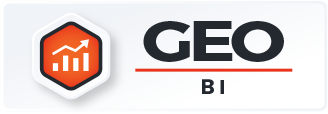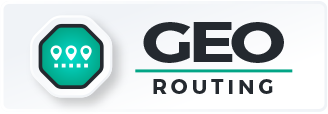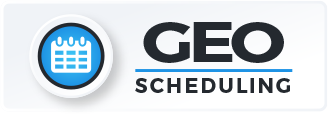- Blog
- Geo Routing
- Route Optimization Software: Plan Efficient Routes for Delivery, Fleets, and Logistics
If your business depends on transportation—whether that’s delivering packages, servicing clients, or managing a fleet—then route optimization software is one of the most impactful tools you can adopt. By intelligently sequencing stops, assigning the right vehicle to the right job, and adapting to real-time changes, this software helps reduce costs, increase productivity, and improve customer satisfaction.
This article breaks down how route optimization tools work, what to look for, and how they support advanced delivery logistics, multi-vehicle routing, and geospatial planning.
What Is Route Optimization Software?
Route optimization software determines the most efficient way to visit multiple locations given variables like time windows, traffic, vehicle capacity, and driver schedules. Unlike basic navigation apps, these platforms are built for operational planning and real-world business constraints.
Common use cases include:
- Last-mile delivery and courier services
- Field service teams visiting multiple client sites
- Fleet managers distributing loads across vehicles
The result? Fewer miles driven, faster deliveries, lower fuel costs, and smarter team coordination.
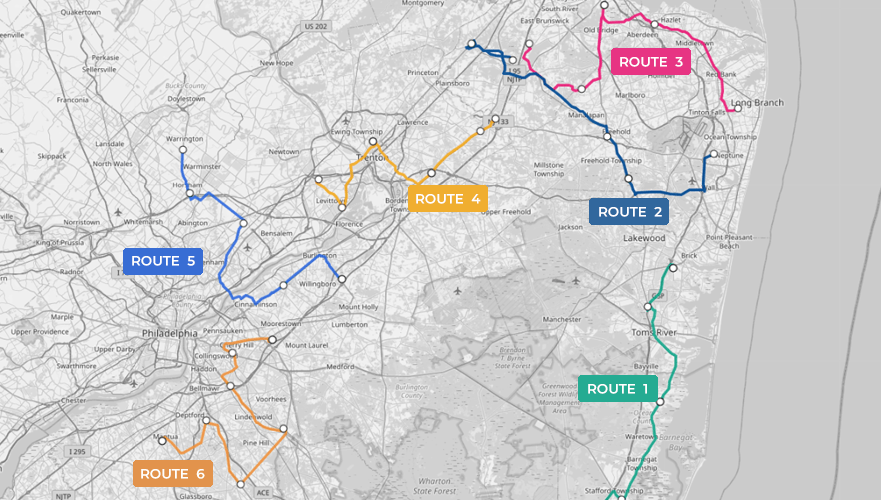

Pro Tip: Don’t just optimize once. Use AI routing software to learn from past route performance and adjust automatically—leading to faster deliveries, smarter dispatching, and better fleet utilization over time.
Route Planning vs. Route Optimization
While route planning lays out a path, route optimization ensures it’s the best path. Planning is about determining where to go; optimization is about determining how to get there most efficiently. Route planning establishes the framework—locations, stops, and order—while optimization applies intelligent logic to minimize time, distance, and cost. Mapline’s routing engine automates this process, analyzing variables like traffic, delivery windows, driver capacity, and priority stops in real time. The result is not just a route that works, but one that performs, turning logistics into a measurable competitive advantage.
| Function | Route Planning Software | Route Optimization Software |
|---|---|---|
| Purpose | Lays out a logical path from point A to point B | Calculates the most efficient route based on constraints |
| Variables Considered | Basic distance and direction | Traffic, service times, vehicle limits, delivery windows |
| Ideal Use Case | Simple point-to-point routing | Multi-stop, multi-vehicle, time-sensitive operations |
If you’re dealing with complexity, optimization is essential.
Features of the Best Route Optimizers
The best route optimizer does more than calculate directions—it orchestrates every moving part of your operation. It automates route creation, balances driver workloads, and adjusts instantly when new data comes in. Mapline’s optimization engine analyzes time, distance, traffic, capacity, and even profitability to ensure every route delivers maximum efficiency. Built for both small teams and enterprise fleets, it scales effortlessly as your business grows. With automation and intelligence driving every decision, route planning evolves from a manual task into a strategic advantage that powers performance and profit.
Efficient Delivery Routing and Fleet Optimization
Efficient delivery routing tools use advanced algorithms to minimize drive time, avoid traffic bottlenecks, and respect delivery time windows. When you also need to optimize fleet routes, the software factors in:
- Vehicle capacity and type (e.g., refrigeration, weight limits)
- Driver shift constraints and compliance
- Delivery priority and service time at each stop
This ensures full utilization of both your vehicles and your people.
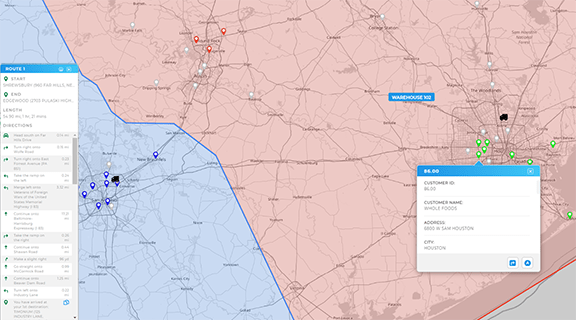
Multi-Vehicle Route Planner
A multi-vehicle route planner helps dispatchers coordinate multiple drivers or trucks across territories. Benefits include:
- Automatic route assignment based on location and availability
- Balanced workloads to avoid overtime or underuse
- Improved routing efficiency across the entire operation
Perfect for logistics teams with complex routing needs and large customer zones.
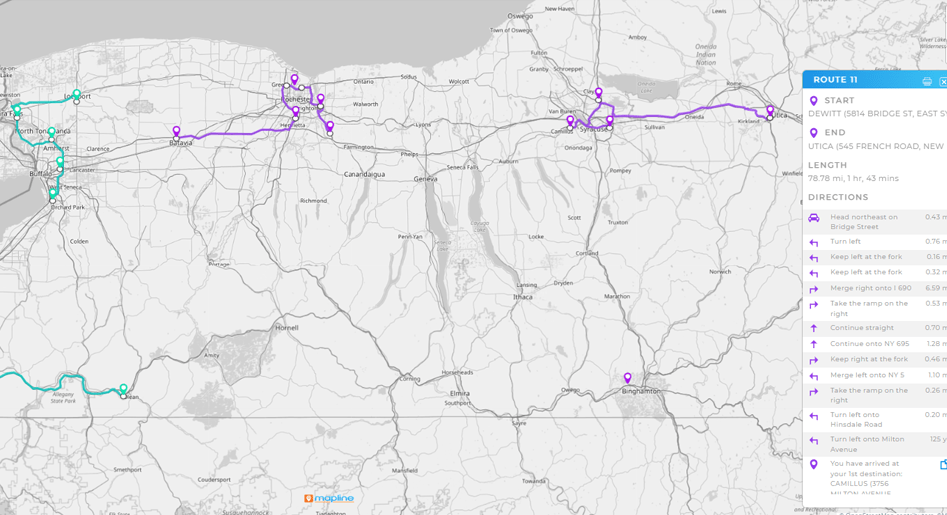
Smart Mapping, AI Routing, and Logistics Management
Today’s tools combine map-based interfaces with intelligent logic, creating a visual planning system that adapts automatically to changing conditions. Mapline leads this evolution by integrating AI-powered routing with real-time geographic intelligence, turning static maps into dynamic, data-driven command centers. Every route, schedule, and asset is connected in one unified view—updating instantly as new data flows in. Whether managing deliveries, technicians, or assets across regions, Mapline keeps your logistics precise and predictable. It’s not just mapping; it’s operational intelligence built directly into your visual workflow.
Route Mapping System and Smart Route Planner
A route mapping system allows planners to visualize, filter, and adjust routes with drag-and-drop ease. A smart route planner adds automation to:
- Auto-sequence stops for lowest mileage
- Apply rules for traffic patterns or delivery windows
- Recalculate routes as new stops are added
This makes routing both fast and flexible.

AI Routing Software and Commercial Routing Platforms
AI routing software uses machine learning to continuously improve efficiency based on performance feedback. When combined with a commercial routing platform, it allows businesses to:
- Adjust routing logic based on KPIs
- Forecast delivery outcomes using past data
- Scale routing across fleets, locations, or franchises
This transforms routing from a manual task into a strategic asset.
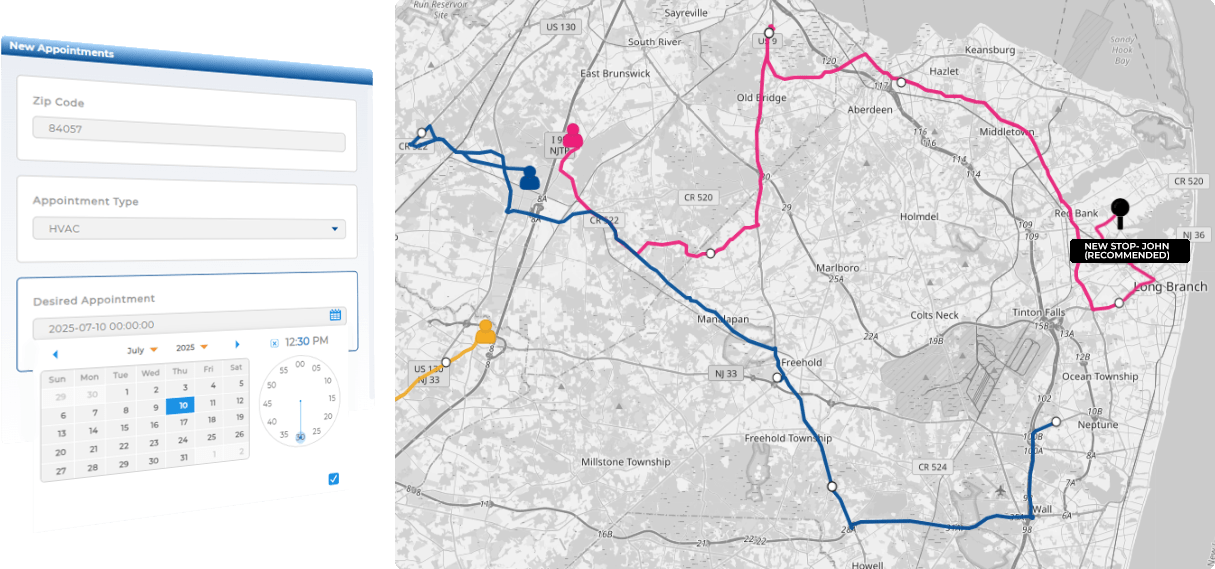
Delivery Planning, Geospatial Analysis, and Logistics Control
At an enterprise level, routing platforms go far beyond basic navigation—they become the backbone of logistics control. Mapline empowers businesses to manage entire delivery ecosystems with precision, combining real-time tracking, geospatial analytics, and advanced automation. Managers can visualize every delivery zone, monitor fleet progress live on the map, and adjust routes instantly based on real-world conditions. Integrated data layers reveal trends in performance, customer density, and delivery frequency, helping teams make smarter, data-backed decisions. With Mapline, logistics management evolves from reactive oversight into a proactive system of control that optimizes cost, speed, and service quality at scale.
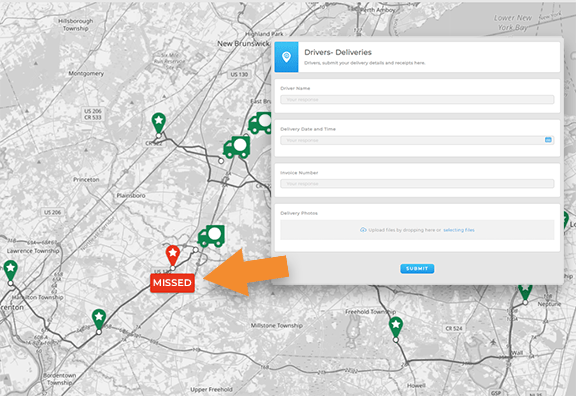
Delivery Planning Tool with Real-World Logic
A delivery planning tool accounts for every detail—warehouse dispatch times, road conditions, service durations, and client-specific needs. These tools improve:
- On-time delivery rates
- Fuel savings and route consolidation
- Driver accountability and reporting
Geospatial Route Optimization and Advanced Logistics
Geospatial route optimization layers in demographic, terrain, and regional data to enhance routing intelligence. This is key for:
- Rural vs urban route differences
- Seasonal access routes (e.g., snow, flood, etc.)
- Zoning, delivery blackouts, and policy compliance
Combined with advanced route logistics, it allows for a proactive, data-rich approach to daily routing operations.
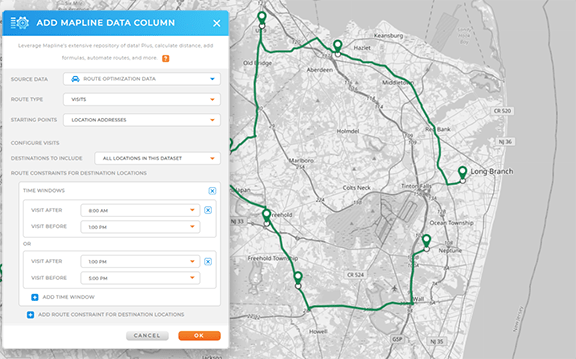
It’s used to plan the most efficient delivery or service routes, considering time, location, traffic, vehicle limits, and business rules.
Yes. Most platforms support multi-vehicle route planning, automatically assigning stops based on proximity and capacity.
AI routing software learns from past route data to improve performance over time, while standard routing applies static logic.
No. Small and mid-sized businesses benefit too—especially those operating across varied terrain or customer types.
Industries include logistics, retail delivery, field services, healthcare, utilities, pest control, and more.






